It’s not just a fishing trip. Remember that. There will be plenty of fishing, but it’s not just a fishing trip.
As I gazed out over the deep, dark water of southeast Alaska’s Inside Passage from the observation deck of the Liseron, a refurbished military minesweeper that now serves as an intimate touring ship that navigates the fjords between Juneau and Sitka, these were the words I kept silently reciting.
It’s not just a fishing trip. It’s an experience.
It’s a tough sell for a dirtbag angler like me. When I fish, I fish. For hours. Dawn to dusk, if possible. I’m the guy who packs and repacks before big trips. That mental checklist is always scrolling in the back of my mind, rooting out forgotten items and double-checking for everything I remembered. For this trip to southeast Alaska, I’d packed my typical “Alaska bag” — a big rolling duffle stuffed with a pair of 7-weights for silvers, and a 4-weight for high-sticking egg patterns and beads for cutthroats and Dollies. My fly boxes were loaded with pink foam Gurglers, bright orange streamers for aggressive char, and a slew of bright magenta Slumpbusters for cohos. I also had a box of hand-painted beads that mimic salmon eggs that sea-run cutthroats and Dollies gobble up like candy. I was ready.
For context, I love southeast Alaska and the Tongass National Forest. I first visited 20 years ago — some friends of mine from Preston, Idaho, purchased a lodge at the northern tip of Prince of Wales Island, and they wanted to include fly fishing in their program. They asked me to come up and spend some time fly fishing the streams, just to see if adding in a day or two of stream fishing for their clients was a worthwhile endeavor. Already, they had a robust saltwater program — guests would take boats out and troll for salmon or go deep for halibut. Like any good entrepreneurs, the lodge owners wanted to get the most out of their business.
More Like This
What they didn’t know was that they’d be introducing me to what I can honestly say is my favorite place on the planet. And it’s not like I haven’t been around a little. Since that first visit all those years ago, I’ve traveled the globe chasing fish. But, almost like clockwork, I return just about every summer to southeast Alaska, and to the Tongass where, for some reason, I find a certain amount of peace in the chaos that comes ashore with the salmon.
Several years ago, as a birthday gift to my daughter, I took her with me on one of my almost-annual pilgrimages to the Tongass. We visited Ketchikan, Petersburg and Wrangell, and we did our fair share of fishing. But, on the advice of a pair of really nice ladies who work for the Alaska Rainforest Islands tourism bureau, we built in some non-fishing activities — we watched LaConte Glacier calve into the sea, and saw pods of humpback whales breaching and sounding. We hiked into the Anan Creek observatory, and watched both black and brown bears feed on migrating pink salmon. We walked a beach littered with ancient petroglyphs from Alaska’s first people, and we toured Little Norway and stood in awe at its stunning memorial to lost fishermen.
It was an experience.
And here I was again in late summer, immersed in the Tongass, this time with my girlfriend, and this time aboard an intimate touring boat that has the ability to slide into hidden coves and get up close and personal with the landscape — something the giant, homogenous cruise ships with the all-you-can-eat buffets just can’t do. As the captain guided the Liseron through a skinny pass and into the Bay of Pillars, I looked down at Toni’s face and I immediately recognized that look.
It was wonder. It was awe. It was, “I had no idea there were places this beautiful on this planet.” Her eyes were as big as saucers and her mouth moved, but nothing came out. She just took in the moment, knowing that it was likely fleeting, that she may never see this again, so she was going to really see it and burn it on her brain so she’d never forget it.
I was jealous. And I was a little ashamed. After 20 years of coming to this corner of the world, I realized that I was taking it for granted. Somehow, I had become numb to the vistas and the cloud-shrouded peaks. Immune to the awesomeness of the glaciers and the giant cedars growing right up to the salt.
So instead, I watched Toni. I watched her face glow and her eyes scan the world around her as she soaked in the beauty. And then I remembered my first trip—my first look at the Tongass and how small I felt among the mountains and the old-growth timber. I remembered watching in disbelief as uncountable numbers of salmon pushed into rain-fed creeks to spawn, and I remembered the first time I came face-to-face with a bear that was doing the same thing I was doing at the same time and in the same place. I remember that exhilaration. That rush.

And then I looked out over the bay and I rediscovered southeast Alaska and remembered what brings me there almost every summer. And I knew it wasn’t just the fish. This place is primal and raw. Unspoiled and largely untamed. It is wild. And I fell in love with it all over again.
And that’s the Tongass. That’s the experience. It took me a day or so to quit jonesing for 12 hours spent traipsing up a salmon stream choked with pink salmon in hopes of hooking a few big Dollies, but I got there.
All aboard
I’m not a cruiser. In fact, I loathe the idea of being stuck on a floating city, even if it’s floating through some amazing places. I also despise the notion that, at every port-of-call, I have to hustle ashore and scare up an “excursion” to go and see or do something that I’m probably going to go and see and do with dozens of other people—and at an added expense.
I just don’t get the appeal of a giant floating Golden Corral that I have to share with thousands of others. Call it post-pandemic hangover if you like, but I don’t think I’ll ever have the desire to stand among hundreds of others and gaze through the sneeze guards at my next meal or wait in line at the bar for the next crappy, sugary cocktail.
Cruise ships. Gross.
But this, I told myself, as we prepared to board the historic Liseron docked neatly among the behemoth cruise ships on the Juneau waterfront … this isn’t a cruise ship. And it’s not. Built in 1952 in Seattle and later loaned out to the French navy for use as a minesweeper, the Liseron is now a restored piece of maritime lore. It still boasts all of its brass and bronze diamagnetic fixtures that allowed it to carry out its military tasks all those years ago, but it’s been lovingly restored into a small touring vessel owned by The Boat Company, a registered non-profit organization that gives weeklong eco-tours of the Inside Passage. Together with its sister ship, the Mist Cove, the Liseron goes back and forth between Juneau and Sitka several times over the course of a summer, plying the waters home to the Indigenous Tlinget people, and the very narrows and fjords sailed by the likes of Capt. James Cook as he tried to find the mythical and unattainable Northwest Passage.
Thanks to a unique permit through the Tongass National Forest, The Boat Company’s vessels can slide into hidden little coves and bays, and get almost uncomfortably close to glaciers as they calve into sea. It can maneuver into hidden anchorages, where passengers can then hop into one of four skiffs that sit atop the boat and venture off into the wilds, either to troll for salmon, bottom fish for halibut or to visit one of thousands of Tongass salmon streams, where anglers can set foot on land and chase trout, char and salmon with fly rods or light spinning gear. Skiffs also transport hikers to shore, where, over the course of a morning, they might wander among the old-growth rainforest or summit a high bluff with a view of the sea.
These daily adventures are part of the experience, and there’s no elbowing your way through the throngs of matching-belt-and-shoes tourists to make sure you see what you came to see. You’re in what you came to see. You can touch it. Feel it. You can experience it.
And, with only 10 staterooms on the boat, you’re in one of the wildest corners of America with only 19 other people, in addition to the boat’s guides, deckhands and crew. There really isn’t anything else like it, and if your goal is to see the best of southeast Alaska over the course of a single week, a trip aboard the Liseron is tough to beat.
The Experience
Again, this took some getting used to. If it had been my call, I’d have hopped on a skiff with my fishing buddy Chad, and we’d have spent all day, every day, chasing trout, char and salmon in the uber-productive waters that flow into the sea from the rainforest.
But … it wasn’t up to me.
This isn’t just a fishing trip. Repeat after me. This isn’t just a fishing trip.
Our first full day on the Liseron was eventful. And I didn’t cast a single fly rod. Instead, the captain guided the boat through a narrow pass, carefully navigating around giant icebergs, and then stopped within what I would suspect is half a mile from the brilliant, glow-in-the-sun Dawes Glacier at the head of Tracy Arm. Then, all 20 of the boat’s guests — and after having spent our first evening on the boat sharing a meal, drinking wine, sipping cocktails and swapping stories, everyone was on a first-name basis — boarded the skiffs and ventured even closer. Our guide, Adam, motored the small craft through the ice floes, bumping a few of the bigger bergs oh, so gently.

And then Kelly, Chad’s wife, caught a glimpse of the first of what turned out to be dozens, if not hundreds, of harbor seals resting atop the floating sheets of calved glacier ice. They seek shelter from predators among the glacial floes, and it’s one of the most dependable places to see the blubbery pinnipeds.
The joy was palpable. Both Kelly and Toni took turns pointing out new and bigger harbor seals they’d spotted, and they both reached over the edge and touched the ice floating in the sea. The guides, too, got in on the action, and collected a few large blocks of crystal clear ice — that night, our cocktails would be served over chipped leavings of the glacier that formed during the last Ice Age some 20,000 years ago.

During our time among the ice, the glacier calved a half-dozen times, with giant shelves of ice breaking off the main body of the glacier and tumbling into the water amid a mighty roar. The events elicited applause from our fellow passengers in the nearby boats, and the waves from the splashing ice lifted and dropped the little skiffs as they rolled by. I remembered back to the first time I’d witnessed this, and I remembered again just how small Alaska can make a person feel. And getting as close as we got and being able to see it happen before our eyes … the power of the moment was impressive. For 20 passengers on the Liseron, it’ll be something they’ll never forget.
The Fishing
Over the years, I’ve largely eliminated from my storage area the spinning gear that I used as a kid, choosing instead to explore the intricacies of fly fishing from an experiential perspective. Until last fall, when I purchased a pop-up ice fishing shanty and a couple of short and supple ice-fishing rods, I could honestly tell folks, when they asked, that “I don’t own a spinning reel, and I wouldn’t have the first clue how to use one.”
It’s not exactly a true statement. I can operate the bail and make a decent cast, and I can keep my thumb on the spool of a baitcaster, but, generally speaking, spin-fishing isn’t my thing. But on the Liseron, one of the things we wanted to do was fish for halibut and salmon in the salt. Certainly, we could have extracted a few fish from the creeks and streams on a fly-fishing excursion, but The Boat Company asks fly anglers to practice catch-and-release — the overarching thought is that the fish that make it to the freshwater ought to have a fighting chance at spawning, and it’s tough to argue with that.
But in the salt? Fair game. Within the legal regulations put forth by the state of Alaska, of course. And that meant trolling and bottom fishing — using baitcast reels. If we were to bring any fish home, I’d have to make an exception to my otherwise strict personal rule, and I’d have to not only use baitcast and spinning gear, I’d have to kill a few fish.
But there’s nothing — nothing — more delectable than halibut, rockfish and salmon that you pull off the floor of the ocean yourself. So, that first afternoon, after returning to the boat from “glacier day,” and after we’d reached our anchorage for just the second night aboard the Liseron, Toni, Kelly, Chad and I boarded a skiff and dropped lines deep for bottom fish to hopefully get a good start on a couple of boxes of fish we could take home.
And we caught a few fish in the crazy-deep waters along the Inside Passage, including a few that looked downright terrifying, like a saltwater sculpin with venomous spines. We did manage a few dusky rockfish, but we opted to return them to the sea — we really wanted halibut and silver salmon, but it wasn’t meant to be that first day on the salt. It really didn’t matter. Because, again, we weren’t among a throng of tourists or maneuvering through some port-of-call in search of the perfect t-shirt for the grandkids. We were floating over kelp beds, keeping count of the sea lions we’d seen and keeping an eye out for humpback whales. We were in the vacation. Not just on one.

The next morning, Kelly and Toni opted for a hike along an old logging road on the Tongass. Chad and I joined Adam and ventured through a hidden bay, home to dozens of curious and playful sea otters, en route to a small salmon stream that flowed from the forest and into the sea.

When we arrived, the tide was just turning and starting to move in. So we walked up the creek into the trees on what turned out to be a gorgeous sunny day in the rainforest. The little creek was choked with migrating pink salmon — schools of the fish were thousands strong. Had we wanted to, we could have cast to pinks all morning, but we were more interested in hunting for bigger cohos. And, in time, as the tide pushed in, we saw some silvers moving up the creek among the throngs of pinks. Silvers are the most acrobatic of the five species of Pacific salmon, and I think they might be the tastiest, too, although some would argue that sockeye, given their diet of plankton and krill, hold up better on the grill.
But we weren’t “meat fishing” — the tug of a coho fresh from the salt is remarkable, and that’s what we were after.
And, of course, we hooked a lot of pinks and I managed to tie into a big late-run chum. I broke three slivers off seconds into the fight, leaving me a bit flustered and questioning my tippet choices. But, again, it was a visual experience — just seeing the fish pushing into the creek that, at low tide, was probably only a foot deep in most places and maybe 30 feet across is something to behold.
I’ve fished hundreds of salmon streams on the Tongass over the years, and I never tire of the sight of salmon, backs out of the water, rushing toward their spawning waters and their eventual demise. And, no, we didn’t spy any bears on the creek — we made sure to make plenty of noise to let the big mammals know we were there — but we saw plenty of bear sign and spotted more than a few fresh-from-the-creek pinks that lay eviscerated in the streamside grass.
The offending bear may not have been there when we were there, but I’d bet it heard our boat pull up and then ghosted into the trees until our fishing was done.
Aboard the Liseron
The Liseron has a personality all her own. Originally built in the early 1950s to seek out and remove explosive mines from the sea from wartime maneuvers, the boat was acquired by The Boat Company in 1989, and is now outfitted as an intimate touring craft that can go just about anywhere a giant cruise ship can’t. She’s small and maneuverable, but surprisingly spacious. If you choose, you can absolutely find solitude on board.

But the design of the boat encourages passengers to gather and take in the journey together — with three forward observation decks and ocean-facing staterooms for every passenger, it’s tough to not cross paths with others on the boat. Additionally, the comfortable salon — where passengers gather for naturalist presentations, appetizers and cocktails — is a great place to come together and talk about the day’s adventures. It comes equipped with a small library of books about the history of the Inside Passage, the Tongass National Forest and the flora and fauna of the region. Additionally, there’s a sturdy table that members of our group used almost daily to play board games or cards.
The boat’s rear dining room, sheltered from the inevitable rain by heavy-duty, see-through sheeting, might be the most ideal setting from which to enjoy a wonderful sunset dinner, complete with good Northwest wine and good company. The Liseron’s kitchen crew stays busy almost around the clock, putting together a big, family style breakfast and, unless you’re eating off the boat over lunchtime, two plated meals a day that feature everything from locally sourced seafood to delectable beef, pork and poultry.

Once passengers are on board, they generally have the run of the place, and with three decks and an open invitation to pop into the bridge and chat with the captain, it’s easy to find a view that works for just about everyone. Everywhere you look, the view is breathtaking.
The staterooms are small, but functional, and each comes with its own full bathroom, a queen-sized bed and a closet to stow luggage. But, honestly, we spent so little time in them … they were a place to sleep and, occasionally, grab an afternoon nap as the captain sought out a new anchorage for the next day’s adventures.

And those adventures happen thanks to great service from friendly crew members and knowledgeable guides who handle everything from the fishing knots to the table service. The crew of the Liseron was attentive and thoughtful. They did a great job keeping everyone safe and happy and their work was unobtrusive. They were quick to answer questions, share their thoughts and explain everything about the boat, the route we were planning to take and what to expect in terms of excursions coming up the next day.
By week’s end, they were every bit a part of the adventure as our fellow passengers, and, what’s more, they seemed to really enjoy the experience, too.
A little bit of everything
If you’re a die-hard fly fisher, and all you want to do is chase salmon, trout and char in coastal streams, this may not be the trip for you. But if you’re traveling with a significant other or with the family — of the 20 of us on the Liseron for a week, 14 were from one group of family and friends — and you’re willing to take in some new experiences, a trip with The Boat Company on the Liseron or her sister vessel, the Mist Cove (a slightly larger, custom-built replica of the Liseron), isn’t just a small-ship Alaskan Cruise, it’s the anti-cruise of the Inside Passage. It might be the best way to actually see and experience southeast Alaska with daily opportunities to become immersed in the place.

Over the course of a week, our group of four fished two salmon streams; chased halibut, salmon and rockfish on three separate afternoons; watched a family of brown bears walk along the beach from the sea kayaks we manned; pulled crab pots burgeoning with Dungeness crabs from the bottom of the ocean; watched humpback whales breach from the sea right off the bow of the boat; hiked to the top of a mountain overlooking Red Bluff Bay; and got up close and personal with massive glaciers, harbor seals, sea lions and sea otters.
It was a smorgasbord of experiential tourism, and we didn’t have to fight the crowds, fork over extra cash for excursions or have to rush back to meet the ship so it could leave for the next port of call.
And we never really “cruised.” Sure, there were afternoons where the captain needed to put in some nautical miles, but, for the most part, the boat kind of ghosted in and out hidden passes. Most mornings found us drifting within sight of new waterfall cascading off the cliffs into the ocean, and by lunchtime, we were either on a skiff on a new adventure, or arriving at our anchorage and preparing to go and do something, be it fishing, crabbing, kayaking, hiking or glacier viewing.
And if we wanted some down time, we didn’t have to do anything at all. Many passengers were more than content to hang out on the observation deck and gaze through binoculars in hopes of seeing a whale or watching the beach at low tide, when bears tend to wander down to the water and look for clams and mussels.
The moments to remember
We spent one afternoon fishing deep for halibut, and we were enjoying the endeavor. Between the four of us we’d managed to almost catch our daily limit, but Kelly caught the fish of the trip — a 120-pound beast of a halibut that we carefully returned to the ocean. The fish was so big that she had to hand the rod off to Chad just to spell her arms, and moments later, Chad returned the rod to her, flexing his hands and stretching out his wrists.
“That damn thing is huge!” he said.
The giant fish finally made an appearance, much to the delight of everyone on board. Adam declared it the biggest fish of the summer, and Kelly beamed. Even for a fly fisher, the moment was pretty cool. The hook came out quickly, and giant fish settled back down to the ocean floor, wiser for the experience.

But if you asked everyone on the skiff that day what the best part of the fishing excursion was, the fish might not have registered. We were floating on quiet water in the fog — the kind of weather that just amplifies every sound. I was paying attention to the tip of my rod, waiting for that tell-tale dip so I could set the hook and hopefully bring in another halibut, when Toni elbowed me in the ribs.
“You hear that?” she asked. I hadn’t heard it, whatever it was.
“I think that’s a whale,” she said. And then I did hear it — that giant exhale accompanied by certain spray. It’s unmistakable.
But in the fog, there was no telling where it had come from. The big animal breached again, and the exhale was loud, as if it was almost upon us. Then another breathy breach. Two whales.
We gazed off into the fog, hoping to catch a glimpse.
Then, almost as if we’d ordered it up, a ray of sunshine burst through the low clouds just as the two humpback whales broke the surface, not 50 yards from the boat.
“I think we’re too close,” Toni whispered. “What if they tip us over?”
I knew this was unlikely, but how does one explain that to someone who’s never seen a whale before this trip, and certainly never seen one this close. We just sat there, quietly watching as the massive mammals moved on by, not bothered in the least by the presence of four anglers and their guide watching their every move.
I looked at Toni, and her face was full of wonder again — she’d later call the trip on the Liseron the best week of her life.
And I think that’s what makes this trip so special, even for someone who lives and breathes fly fishing. Yeah, I got to cast a bit, and I caught a few fish, both on the fly rod and the deep-sea rig. And it was fun — it really was.
And the Liseron was the ideal home base for an adventure so worthwhile, every one of us on the boat wanted to make the turn in Sitka and head back to Juneau over the course of the next week.
But the best part? I loved watching others fall in love with my favorite place — and truly appreciating everything about it. No, I’ll never forget the first time I visited the Tongass. It’s the reason I keep coming back.

But I’ll also never forget watching Toni’s face light up at the sights and sounds of the Inside Passage, or the little tear running down Kelly’s cheek as she sat in a skiff surrounded by dozens and dozens of seals lounging on the ice.
Like me, they get the majesty of the place … there’s nowhere else like it. Already, Toni is talking about going back next summer.
“Maybe we can do some more fishing?” she asked.
Now you’re talking.
IF YOU GO
Choosing a voyage
The Boat Company and its two vessels — the Liseron and Mist Cove — sail alternating routes between Juneau and Sitka, Alaska beginning each year on May 15 and ending the second week of September. Though voyages in the heart of summer tend to be the most in demand, there’s really no wrong time to go. Average daily high temperatures in May and September differ by only a few degrees from their June, July, and August counterparts.
Getting there
Due to the number of large (massive) ship cruises that operate out of Juneau and Sitka, both cities are incredibly well served by flights from dozens of domestic U.S. and international locations.




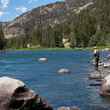
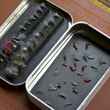
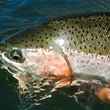
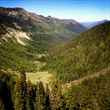



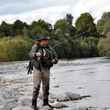
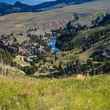



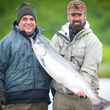
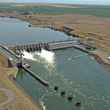



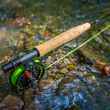
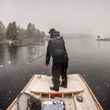



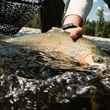
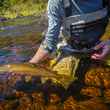

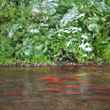
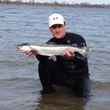
Comments
RICHARD G LUEDERS replied on Permalink
My wife and I took a Trip on the Liseron and it was one of the most interesting experiences of all our travels. The close up encounters with the flora and fauna was amazing. We were within 150 feet of a Grizzly grazing on the flats as we were dining on the stern of the Liseron!
The Liseron is a historic vessel that started life as a French minesweeper and was completely refitted by the Boat Company as a "small cruiseship." Checkout it's history!
Pages